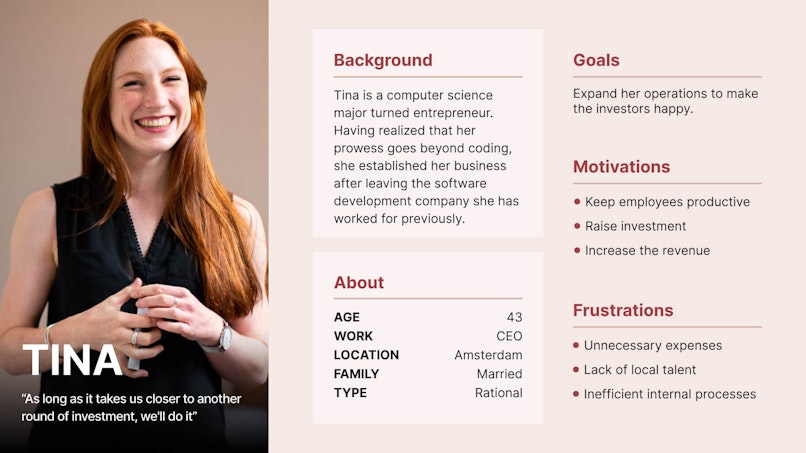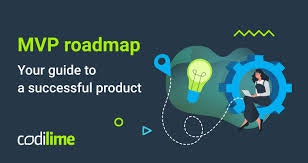Starting a business is tough. It's a wild ride of highs and lows. Successes come with lessons. This handbook is your compass in this fast-changing world. It provides practical strategies to build your startup from scratch. Use a Minimum Viable Product (MVP) approach.
This guide is for you. It is for first-time founders with a great idea. It is also for seasoned entrepreneurs looking to pivot with a new venture. It aims to clarify and guide you in launching a startup. It ensures you thrive, not survive, during the startup phase.
The MVP process is about starting smart—focusing on the core of your product that delivers value while minimizing initial development costs and time. This approach allows you to test, learn, and iterate based on real user feedback, thereby refining your product to better meet market demands without overcommitting resources.
Ideation and Validation
Have you ever felt overwhelmed by tasks that seem straightforward yet inexplicably complicated? That's a pain point many users experience daily. To define the problem, first engage your target audience. Use surveys and interviews to ask specific questions about their frustrations.
Dive deep into online forums relevant to your industry to capture unspoken challenges. By finding these pain points, you set the stage for a solution. It will resonate with users and provide the relief they need.
Market Research
Understanding your competitive landscape is crucial. Use tools like Google Trends to track interest in your industry's keywords. Use tools like SEMrush to analyze your competitors. Look for both their strengths and missed opportunities. Reading trusted industry reports can give you a broader view of the market. It can help you spot trends that are ripe for innovation. This research ensures your product doesn't just enter the market. It must arrive ready to conquer.
Conceptualize the Solution
Developing a Unique Value Proposition (UVP)
Imagine a world where every professional task flows seamlessly. Your product could make that a reality. Crafting your Unique Value Proposition starts with this vision. It should clearly state how your product uniquely solves the problems identified earlier.
Test this UVP with a segment of your target market to gauge its impact. Refine it until it crisply communicates the core benefit of your product, making it irresistible to prospective users.
Creating Customer Personas

Meet Tina: she's a 43-year-old CEO juggling numerous initiatives, desperate for a solution that integrates seamlessly across her tools. Creating such detailed customer personas involves compiling data from your research to build profiles that represent your target users.
Tools like Xtensio or HubSpot's Make My Persona can help visualize these personas. These profiles guide your product development, ensuring it meets the real and specific needs of your users.
Validate the Idea
Prototype Development
Transform your ideas into a tangible reality with a prototype. Use design tools like Figma or Sketch to create a clickable model of your product that showcases its functionality. This prototype doesn't need to be perfect or final—it just has to clearly demonstrate how your app solves the problems identified. It’s your first real peek into how your concept holds up in the real world, making it a crucial step in the validation process.
Feedback Loop
Now, let’s test the waters. Introduce your prototype to a small group of potential users and watch their reactions closely. Use structured feedback sessions to ask pointed questions that dig into their user experience.
“What features stand out?” “What elements are lacking?” Their candid feedback is gold, offering you direct insights into how your product performs in real scenarios. This feedback loop is your tool for fine-tuning your product, making it ready to meet the market’s demands confidently.
Building the MVP
Identifying Core Functionality:
What are the essential elements that make your product indispensable? At this stage, focus on features that solve the primary problems of your target users.
For instance, if you're developing a productivity app, core functionalities might include task creation, synchronization with calendars, and real-time notifications.
This ensures the product meets the basic requirements necessary for initial user adoption and provides a solid foundation for additional features.
For more insights, check out this comprehensive guide on build MVP.
Feature Prioritization Matrix:
How do you decide which features to develop first?
Use a Feature Prioritization Matrix to categorize each potential functionality by its impact on the user experience and the effort required for development.
Place features into quadrants ranging from "High Impact, Low Effort" (quick wins) to "Low Impact, High Effort" (thankless tasks). This strategic approach helps streamline development and ensures resources are allocated efficiently.
Design and Development
Wireframes and Mockups:
Ever wondered how ideas transform into visual designs? Wireframes and mockups are the blueprints of your application. They allow you to layout the structure and visual aesthetics of your product, offering an early visual model for stakeholder feedback.
Utilize tools like Figma or Miro to draft these designs. This stage is crucial for iterating design concepts without extensive coding, ensuring the user interface is intuitive and user-friendly.
Development Plan:
What’s the roadmap to bring your digital product to life? Crafting a detailed development plan with defined milestones and deadlines is essential. This plan should outline key phases such as backend development, front-end styling, and user testing.
Employ project management tools like Trello or Jira to keep the team on track. A clear, well-structured development plan not only guides your team through the complexities of the build but also aligns expectations and keeps the project on schedule.
Agile Methodology:
Why do startups love Agile? Because it allows for flexibility and rapid iteration based on user feedback and changing conditions. Implement Agile practices by organizing the development process into sprints—short, consistent cycles that focus on continuous improvement and frequent reassessment.
This methodology encourages teamwork, accountability, and a focus on delivering functional software at a steady pace, making it ideal for startups looking to adapt and evolve quickly.
Post-Launch
User Feedback and Iteration
User Analytics:
Wondering what your users really do on your app? Analytics tools like Mixpanel and Google Analytics can reveal patterns in user behavior, helping you understand which features they love and what might be causing them to churn.
By closely monitoring metrics like daily active users and session lengths, you can make informed decisions to enhance the user experience.
Continuous Feedback:
How do you keep your product fresh and relevant? Implementing continuous feedback mechanisms, such as in-app surveys and feedback forms, allows you to hear directly from your users.
This real-time data becomes invaluable as you iterate on your product, ensuring that each update meets the actual needs and desires of your audience.
Scaling and Growth
Marketing Strategy:
Ready to reach a wider audience? A robust marketing strategy, combining SEO, content marketing, and active social media engagement, can significantly increase your visibility. Tailored blog posts and engaging tutorials can attract more users while establishing your brand as a thought leader in the industry.
Partnerships and Collaborations:
Ever considered the power of synergy?
Forming strategic partnerships with complementary businesses can open new channels for user acquisition and provide enhanced value to your existing customers. Whether it's integrating with other software or co-hosting webinars, collaborations can amplify your reach and impact.
Product Evolution
Feature Expansion: Listening to your users' feedback isn't just polite—it's smart business. Use their insights to guide the development of new features, always prioritizing those that deliver the most value. Innovating based on user needs keeps your product ahead of the curve.
Long-Term Vision: Where is your product headed? Regularly revisiting and updating your roadmap ensures that your business stays aligned with both market trends and your long-term strategic goals. Staying flexible and responsive to the changing environment is key to sustained success.
Conclusion
The "Survival Handbook for Fearless Founders" is designed to be your companion through the thrilling yet challenging journey of launching a startup.
It breaks down the complex process of creating a Minimum Viable Product into manageable, actionable steps, equipped with real-world examples to guide you from ideation to scale. This handbook not only serves as a blueprint for building your product but also empowers you with the strategies needed to navigate the startup ecosystem successfully.
As you step forward, remember that the path of entrepreneurship is as demanding as it is rewarding. Embrace the uncertainties and use them as stepping stones to innovate and adapt. Keep this handbook close as a reminder that with persistence, insight, and a strategic approach, you can turn your visionary ideas into thriving realities.
Stay fearless, stay focused, and let this guide illuminate your path to startup success.





